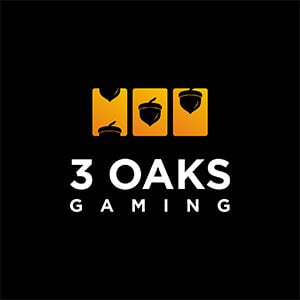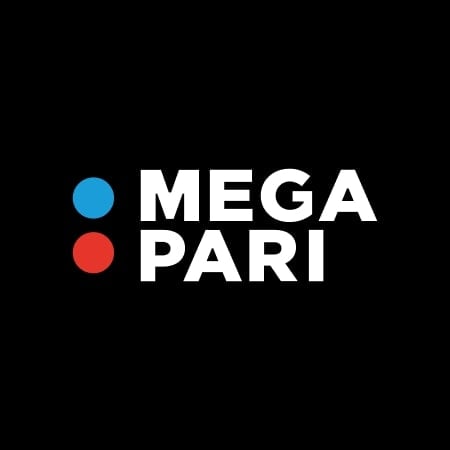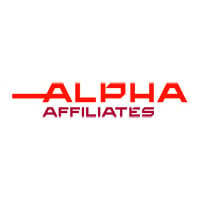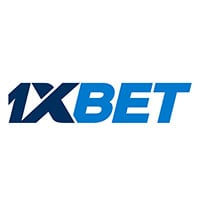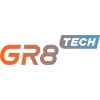t ICE 2017, Journalist for Chain-Finance, Mathew Warner explained the logic behind blockchain and the impact it will have on the gambling industry
A blockchain is a decentralised distributed ledger that acts in a similar way to traditional ledgers by keeping a record of data. However, unlike traditional ledgers, the fact that it’s decentralised and distributed means that each person in the network has access to the information it contains, and can see this information at any time. It is important to note that despite the blockchain system initially being designed for Bitcoin, blockchains don’t need to be linked to Bitcoin. blockchain is the technology, Bitcoin is the currency, much like Twitter is a form of social media and it uses the internet, it’s not the same thing.
People on a blockchain network are connected directly to each other, with the purpose of the network being to share, record and verify data in its various different forms. The network collates all the data at set time intervals and each set of this data is called a block. People otherwise known as "miners" compress this block of information down into a hash, which is a series of letters and numbers. Each hash is unique and includes a direct link to a previous block. Similarly to the links in a chain or a jigsaw, if one bit of the data in a block is changed the next hash is entirely different and would no longer fit with the previous block. This means you can trace a valid chain of blocks from where the blockchain is at the moment to where it started off.
THE GENERAL CONSENSUS
A blockchain has no central database, rather each person in the network has their own copy of the ledger which is kept up to date. Each time a block is added the information is sent out to everyone else on the network to check against their version of the ledger and as long as the information matches then it can be added.
However, if someone were to try and falsify information and add it to the system they will come up against some problems. When the data is sent out to other members of the network it would identify discrepancies between its data records and the newly falsified data and would reject the information. So if a node wants to make a payment and the rest of the nodes know that it doesn’t have the finances to make that payment it can’t happen.
WHAT FLAVOURS DOES IT COME IN?
There are many different kinds of blockchain available, with new ones being developed as and when situations demand. The first are public or permissionless blockchains, which are available for anyone to join, no matter who they are, or where they are. They are often referred to as the most anonymous of the blockchain types as they are not required to link a real identification to their blockchain identification. On the other hand, private or permission blockchains require users to be granted access by someone with administrative power, giving a measure of control to the people who created the system or who are curating it. These systems often require users to register their real ID alongside their blockchain ID, which isn’t anonymous.
SMART CONTRACTS
Smart Contracts are most often associated with Ethereum, which is another kind of blockchain. The distributive model and trustless nature of the blockchain results in the ability to provide this service, where pre-written computer code stored on the blockchain carries out the function when pre-set conditions are met. This allows the automation of processes in a secure and trustless environment.
Two things it allows specifically are to decentralise applications or "de-apps" and the ability to run Decentralised Autonomous Organisations (DAO). A de-app is any software application that sits on the blockchain and uses the blockchain characteristics to provide enhanced services, whereas a DAO is a decentralised organisation that runs without any management or directors by using the consensus of the blockchain and smart contracts to run the system.
ORACLE
Oracles are linked to Smart Contracts, they’re a necessary interface between the hard computer code and the grey areas of human law and interpretation. They can be software, hardware or humans which highlight and authenticate real-world events and submit that data to the blockchain to be used in smart contracts. blockchain oracles have built a reputation for settling disagreements and authenticating data. They can be challenged and replaced by consensus on the blockchain if they are not deemed to be performing, and although they aren’t significant for less complex things such as card or dice games, they have the potential for things like blockchain-based prediction market, lotteries or wider casino operations.
POTENTIAL BENEFITS FOR GAMBLING AND WHERE IT’S BEING USED
blockchains have the potential to enhance management of traditional land-based gaming operations, for compliance with regulations as a no-charge-back payment system. For example, payments from customers could be authenticated and finalised with no chance of failure. Due to blockchain’s provably fair system, it doesn’t require third parties to verify randomness. The blockchain can generate verifiably random numbers and players could then assess the fairness of this by checking the process themselves. So effectively what it’s doing is using the blockchain as a random number generator. This is actually already being used, with one example being the Bitcoin betting dice site, Satoshi Dice, which uses a provably fair system based on Bitcoin block hashes. You can also use it in other areas; for example it’s already being used for online card games.
• Authentication and validation
Another important aspect of blockchain is its ability to authenticate and validate transactions. There are a number of start-ups that are leveraging blockchains to authenticate identities for payment of financial transactions but it can be applied to anything to do with identification. The process involves using the blockchain as another factor of security to create and verify the identity of users, facilitating the management of it from the user’s side. This provides them with further control over their personal information, who has access to it and how that access is granted. The US Department of Homeland Security has awarded four different projects that will use blockchains to develop new solutions, grants, identity management and privacy protection.
• Consumer Identification and application
In addition to this, there are a number of applications that could provide remote proof of customer application using a blockchain as an authenticator of video, photos or audio recording during the application process. Online gaming operations could adopt blockchain time-stamping videos in their application processes to protect them from claims, for refunds or charge-backs. Videos essentially become a tamper-proof record of the application process, reducing a gaming operation's legal liability as well as potentially being useful to law enforcement investigating fraudulent activities.
• Dangers of falling behind
There is also a viewpoint to be considered with regards to customer trust and perception. As more and more sectors take on blockchain, it will become more widely known to provide efficient and highly secure options, with customer looking at all areas of their lives to use blockchain. If a transparent, trustless, secure system is not being used customers will question whether a company has something to hide or if it’s really secure. There’s also a danger of not keeping up with technology and risk of falling behind the competition. Much the same as when the internet came in, it had an impact on almost every sector; companies who were quicker to adapt, benefited more from
the opportunities.
• blockchain scandals and risks
There are a number of scandals and risks that have made the headlines particularly in regards to Bitcoin. As previously mentioned Bitcoin isn’t blockchain, however there is another misconception that needs to be addressed here. Namely, that when Bitcoins are hacked it’s not actually the blockchain itself that’s being hacked, it’s always an interface which sits outside of the blockchain. It’s either a weakness in the traditional security of a network or some sort of malicious action that has been taken by employees that have caused the problem. Since its inception in 2009, the Bitcoin blockchain has never been hacked.
There are other instances such as the DAO being hacked on the Ethereum blockchain. Again the blockchain itself was not hacked, it was actually a loophole in the code of the DAO which was exploited. The creators knew about this loophole but just chose to ignore it, much to their detriment. Although the Bitcoin blockchain is currently the most popular, it has issues with stability and settlement speed. However, there are a huge number of blockchains with varying benefits and new technologies are being investigated to combat these issues, such as ‘Sharding’, which would increase blockchain's capacity beyond any other alternative that exists. As well as this, Zero Knowledge Proofs can potentially speed up transaction settlements to the point where they would be instantaneous.
BLOCKCHAIN'S KEY FEATURES
TRANSPARENCY
There are many features that blockchains have in common, the first being transparency. This refers to the fact that details of all data and transactions between the participants are visible to all members and non-members alike. Therefore, anyone with an internet browser can use a blockchain explorer to find out what has happened throughout the entire history of the blockchain. This also means that because it is a transparent system it is free from censorship. Any data or currency on the blockchain can be traced by following a list of transactions it’s been involved with until you reach its final location. This is particularly interesting to law enforcement as you can identify illegal activity and track where the funds have gone to.
IMMUTABILITY
Another key point about blockchain is its immutability. This means that it provides permanent records of all the transactions that have ever been made on the network. Due to the hashes described previously, when the data is entered into the network, it can’t be changed at any time, by anyone or for any reason. If any detail is changed no matter how small then the hash completely changes. As the hashes link the block to the previous blocks a change in a hash would be instantly recognised and rejected by the rest of the network.
The resulting immutability is hugely beneficial especially for auditing, as the data as well as the time at which it was entered onto the network can be trusted not to change at all. However, what is not guaranteed is the information in the chain is not necessarily accurate. Nonetheless, there are companies working towards automatically uploading verifiable information onto the blockchain.
SECURITY
Another critical aspect of blockchain is it's highly secure nature. This security is a result both of its distributed system and its consensus protocol. Being a distributed network, each person or node of the network maintains an up-to-date copy of the blockchain and each node communicates with all other nodes in the system. Not only does this protect against having one point of failure in the event of a natural disaster or some sort of technical difficulty but when combined with the consensus protocol it protects against hacking.
When new data is added all nodes check for agreement and the data is only accepted if it passes the given threshold. For someone to negatively influence the network they would need to hack over that certain percentage of the network rather than one central server which is an unfeasibly expensive and time-consuming feat and one that gets progressively more difficult as the system grows.
With the blockchain's ability to communicate between nodes and without having one central point of failure it also means that aspects like distributive demand or service attacks, power outages, government intervention or anything else that shuts down part of the network won’t prevent the function of the full network. As long as one part is still running, when the other parts that have been taken offline for whatever reason come back on, that part of the network will be updated by the rest of it.
ANONYMITY
Public blockchains are often described as anonymous as there is no requirement to link your real identification alongside a blockchain identification. However, it’s not strictly true to say that any blockchain is anonymous. The anonymous nature stems from not having to register an ID and it being used by criminals for various different reasons, such as narcotic sales, money laundering or raising funds for organised crime or terrorist groups. Whilst you don’t have to register a real ID, you still know that person's blockchain ID and the transactions that ID has been involved with. If you know enough points of the blockchain system where they link to a real-world outlet you can identify different people on the system, so it is probably best described a "pseudo-anonymous" system.
TRUSTLESS
A blockchain has no need for third parties. If a transaction is made on the blockchain, it’s not possible for the payer to get the money back without a new transaction from the payee. On the blockchain it is not possible to renege on a deal, you can’t double spend and as an immutable record it can be trusted not to have been altered since it happened. All of these aspects combined bring about a method of transacting with anyone on the system without having to know who they are or if they’re reliable. Their compliance to any agreement and ability to complete any transaction is built into the system. If the resource or information isn’t there then it won’t allow the transaction to take place.
DISINTERMEDIATION
The distributive model and the trustless nature of blockchain results in its ability to remove intermediaries or middle parties that are common in many markets. This reduces the cost or operating for those on both sides of the transactions and opens up possibilities of providing services to people who would otherwise not be able to afford or access them. This in turn gives more power and flexibility to users, and generally increases the efficiency all round.
Blockchain: the future of coded technology?
A
By Gambling Insider
Premium+ Connections
Premium Connections
Consultancy
Awards
Executive Profiles
Mohegan
Mohegan Inspire
GAN
DraftKings
The Star Entertainment Group
Follow Us
Company profile: Growe Partners
Dominate the Sports Betting Affiliate Arena with Growe Partn...Company profile: GR8 Tech
The sportsbook provider discusses turning sportsbooks into a...Analysing sports betting data from the African Cup of Nations 2024
Sports betting supplier Betby provides Gambling Insider with...LiveScore Group: Football’s changing relationship with fans
Gambling Insider delves deeper into LiveScore’s Evolution...9 April, 2024
A new trend: Why are gaming companies going private?
9 April, 2024











